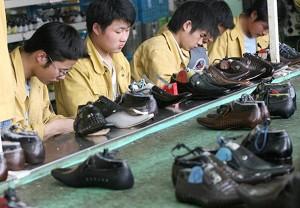In Part 1, I mentioned that the income gap between eastern and the western China, instead of decreasing, has widened since the start of the “Develop the West” Campaign. This is the first sign that illustrates the failure of this campaign. Time will tell whether other regional development policies will be effective. Next I will have a brief review on the regional development policies that China has used. This might help us understand the reasons behind China’s existing development policies and forecast their likely outcomes.
Between 1949 and mid-90’s, China has applied three large-scale regional development campaigns.
The first regional campaign was carried out between 1952 and 1957. To change the situation that 70% of China’s industries were clustered in the east coast, during the “First Five-Year Plan” period, China’s most infrastructure projects were done outside of the coastal regime. Among the 156 large development projects aided by the former Soviet Union, 50 were built in northeastern China, 67 in central and western China. It was the first large-scale regional development effort although China did not call it a regional development campaign.
San-Xian Construction between 1964 and 1978 was the China’s second regional development campaign. For nearly 15 years, the Chinese authority terminated nearly all the industrial projects in the coastal regime. Each year it allocated over 50% of its national infrastructure development budget to the western region, especially Sichuan province, Gansu province and the mountain regions in western Hubei province, a region termed San-Xian. The accumulated sum of investments reached 205 billion yuan. In addition, the China moved a number of research institutes and industries, as well as nearly 4 million science and technology professionals and technicians, from the coastal regime to the western region.
The third regional development campaign started in 1985 to develop the coastal region. Unlike the previous two regional development campaigns, this campaign did not rely on the Chinese central government for financial and resource investments. Instead, it required local governments in the coastal region to attract foreign investments, to increase exports, to increase the region’s revenues and to allow people some autonomy in spending so as to launch marketing mechanism. In short, it relied on bringing in foreign investments and foreign corporations to develop the costal region’s economy and prosperity.
These three different regional development campaigns resulted in three different outcomes. During the “First Five-Year Plan” period, the basic infrastructure development in central and western China resulted in an increase of industrial development in those regions. Moreover, the GNP gap between the coastal region and other regions was reduced temporarily. In the second campaign, there was little success in closing the GNP gap. In fact, the GNP in western China slightly plummeted. The third campaign has been very effective in developing the coastal region. It has also revolutionized the national economic management system. However, the income gap between the coastal region and western region has widened dramatically.
Judging from their goals, the first and the third regional development campaigns are successful while the second one was a failure.
On the other hand, the success of the first and the third campaign was attributed to different reasons. The success of the third campaign was mainly attributed to the coastal region’s advantages on its geography and industrial technologies. It was the result of the market mechanism. The first campaign was successful in increasing the western region’s GNP mainly because all the industries were pretty weak all over China. That was the reason why the former Soviet Union’s aide in developing large industrial infrastructure in the western region made a difference in closing in the income gap between the western and the coastal regions. Apparently, a campaign relying on borrowing money from a foreign government could not last long. As a result, the GNP in the western region plummeted since 1957 after the former Soviet Union terminated the fund. The failure of San-Xian Construction was another proof. During the San-Xian Construction campaign, China did not have any foreign aide. Allocating more budgets to the western region compromised the entire nation’s economy and had little success in narrowing the income gap between the two regions.
In retrospect, China’s current regional development policy is getting out of its hand.
If China sets its goal on developing different regions, it has to rely on market mechanism in order to sustain a successful campaign. However, it means that it will have to allocate its resources according to market mechanism, which will further widen the income gap between the coastal and western regions.
If China sets its goal on narrowing the income gap between different regions, first off, it must have the financial strength to develop underdeveloped regions. Even if it has such a financial muscle, its current regional development policy to have every region blossom has not shown any financial support for the underdeveloped regions or any mechanism to transfer revenues from the coastal region to other regions.
China’s incoherent regional development policy has fully illustrated its administration style. Since Jiang Zemin’s rule, the Chinese government has been dominated by engineers. Engineer administration is more proficient in making local adjustments to appease conflicts. However, it is a common pitfall for an engineer administration to be blind to the big picture.
Meanwhile, China does not have the fortitude to make strategic adjustments. When the western region becomes economically stagnated, it proposed a western development campaign. When northeastern region complained about recession, it proposed a northeastern development campaign. When the central region complained, it proposed a central development campaign. When the eastern region groaned, it proposed an eastern development campaign. These were the driving factors of the dynamics between the Chinese central government and the regional governments. Today’s central government continues to rely on the China’s system to carry out national policies; however, it has no choice but to make compromises to local political leaders for their local interests. China’s incoherent regional development policies are the results of such patches and compromises to regional governments.



